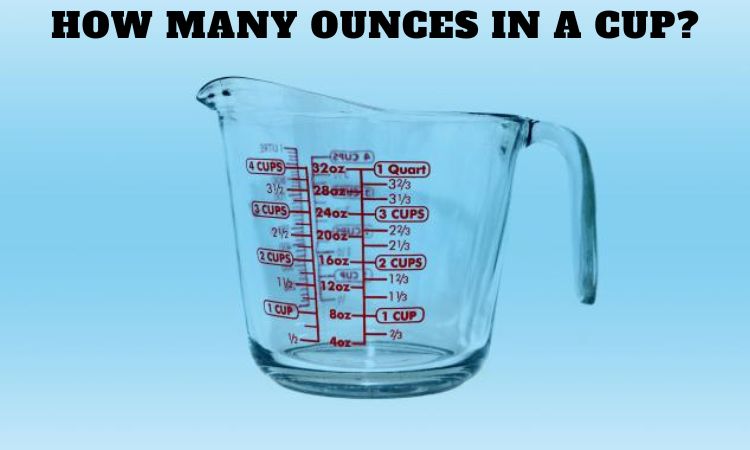
Have you ever been following a recipe that calls for a specific amount of liquid in “cups” and wondered, “but how many ounces are in a cup?” Fear not, fellow baker or cook, because this blog post is here to clear up all your confusion about cup and ounce measurements!
The US Customary System: Cups and Fluid Ounces
In the United States, there are two main measurement systems used in cooking and baking: the US customary system and the metric system. Today, we’ll focus on the US customary system, where cups and fluid ounces are the common units for measuring liquids.
Here’s the key takeaway:
- There are 8 fluid ounces in 1 cup according to the US customary system.
This means that if a recipe calls for 1 cup of milk, you can confidently measure out 8 fluid ounces of milk instead.
Pro Tip: Most measuring cups in the US will have both cup and fluid ounce markings on the side, making it easy to measure both units with the same tool.
Real-world Examples: Using Cups and Ounces
Now that you know the conversion rate, let’s explore some real-world examples:
- Recipe calls for 1/2 cup of water: This translates to 4 fluid ounces (1/2 cup * 8 ounces/cup = 4 ounces)
- You need 12 ounces of orange juice for your morning smoothie: This is equivalent to 1.5 cups (12 ounces / 8 ounces/cup = 1.5 cups)
Beyond the US: The Metric System and Milliliters
If you’re venturing into international recipes, you’ll likely encounter measurements in the metric system. In the metric system, milliliters (mL) are the standard unit for measuring liquids.
Here’s a quick conversion to keep in mind:
- 1 cup is approximately equal to 240 milliliters (This is not an exact conversion, but it’s close enough for most cooking purposes)
Remember: When using international recipes, it’s always best to double-check the measurements to ensure accuracy.
Top Tips for Measuring Cups and Ounces
- Invest in a good quality measuring cup set. Look for one that has clear markings for both cups and fluid ounces.
- When measuring dry ingredients like flour or sugar, use the spoon-and-sweep method to ensure you’re not packing the cup. Fill the spoon, then level it off with a knife before adding it to your measuring cup.
- For liquids, pour the liquid directly into the measuring cup until it reaches the desired level. Be careful not to overflow.
Conclusion
Understanding the relationship between cups and ounces is a fundamental skill in the kitchen. By following these tips and conversions, you can confidently measure your ingredients and create delicious dishes without any measurement mishaps. Now go forth and conquer those recipes – you’ve got this.
